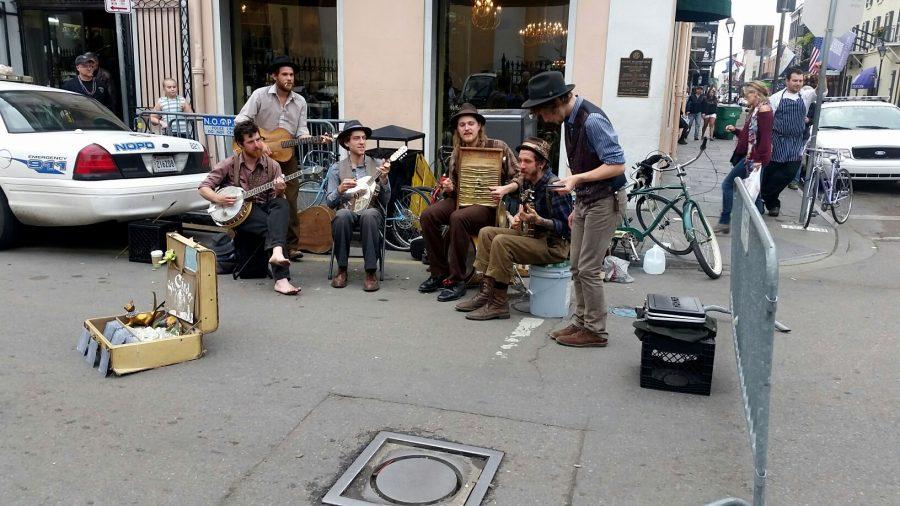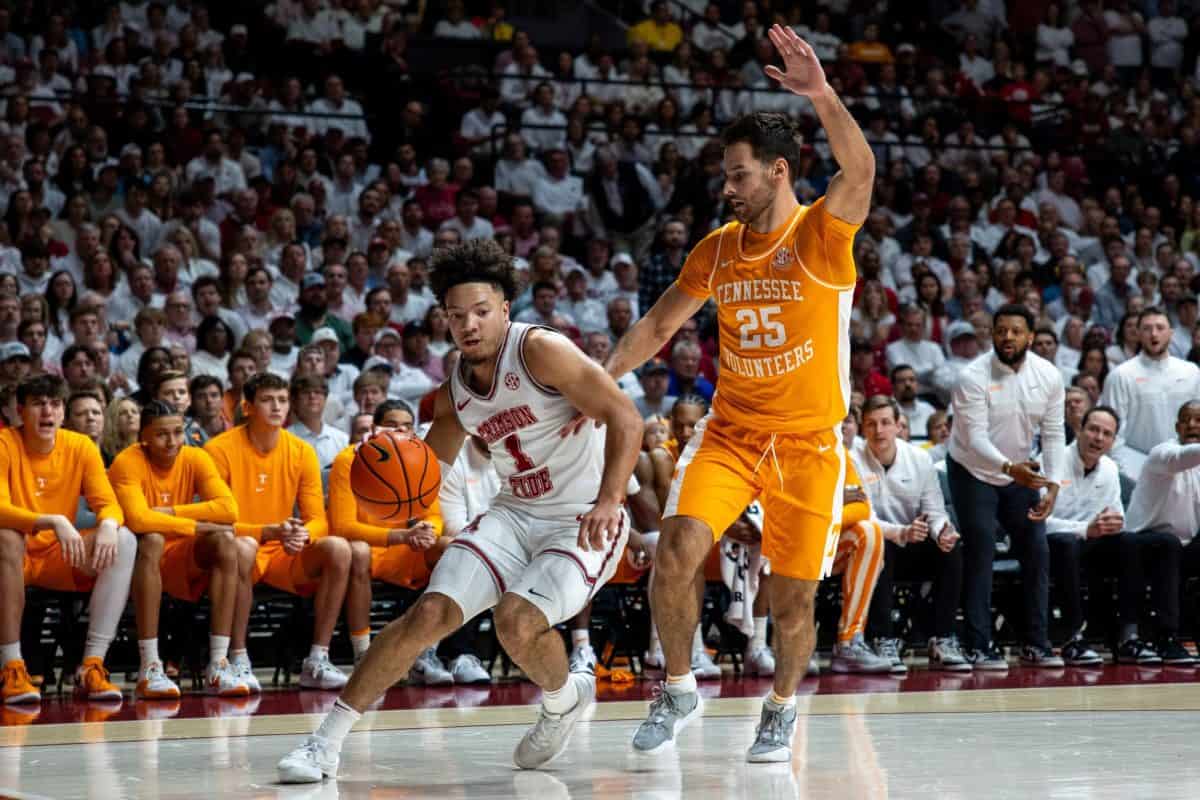Of the four boys in the group, there was only one pair of shoes on the corner of Decatur Street and Conti Street.
Wake up Mama!
Turn your lamp down low…
You’ve got no nerve babe, to turn Uncle John from your door.
On Royal Street, just across from the Hotel Monteleone, this baby-faced boy with shiny blue eyes hollered hoarsely over his sunburst hollow-body acoustic guitar. He sang the blues wearily through the day. From noon–3 a.m., he sang and played for pocket change in his guitar case.
Only a block down, a five-piece jazz band blocked the street in front of a CVS. They bobbed back and forth as the tuba, trumpet, trombone, snare and cowbell took their turns playing enchanting solos. Before the song ended, the cowbell player was dancing with a woman about 40 years younger than he was.
He winked at her as he spun her to his side.
Bum-da-dum-da-dum-da-dum.
The chrome train pulled into the station at Tuscaloosa around 2 p.m. The woman motioned for us to get on the train, and her hat almost fell off when she shook. With a helping hand, the passengers squeezed through the narrow opening into the train and stowed their luggage in compartments.
The woman came back around to see where each of us was going so she could put a notecard above our seat showing the stops. Ours was on a pink one that read, “New Orleans.”
Above her eyes was a thick line of baby blue eyeliner, with glitter hanging from her long eyelashes. Her long hair was held by a gold, purple and green hair scrunchie. Her metallic nametag read “Tonya.”
“Let me tell you somethin’ baby: You’re going to NOLA,” she said as a grin spread across her face. “The party never stops, but you gotta be able to get back on the train at 6:30 a.m. Sunday.”
As she walked away, her head lifted up in a hearty laugh. Apparently, she knew something we did not.
The sun had already set as we crossed Lake Pontchartrain. Occasionally, we would catch glimpses of the cityscape in the distance. The first notable sight in The Big Easy was the mile-long above-ground cemetery. They are often called the “cities of the dead.” It was a haunting sight to see the small buildings glowing in the moonlight. Candles and statues of the Virgin Mary peppered the city.
As soon as we arrived at the hotel, we could hear the sounds of a parade. So, we rode the gold-painted elevator with wall-to-wall mirrors from the seventh floor to the ground floor. It took a grand total of 10 seconds.
Motorcycles with LED lights led the parade – throwing beads from saddlebags on the sides. Most of the floats were Greek gods, but some represented different states in the U.S. Entire bags of beads flew in the air, showering and pelting people across the barricades. Cups, coins, feather boas, tootsie rolls, bubble gum, bouncy balls and light up hats were thrown in bulk as the floats moved in a circle around Canal Street.
After the parade ended, the crowd seemed to funnel toward Bourbon Street – almost as though they were driven by some primal instinct.
At the first bar on the street, a young blonde stood with a tray of neon test tube shots. She walked up to a young college-aged guy and bit her lip.
“Hey there, do you want a shot?” she asked.
“Yes! He wants the shot,” said a random bystander.
She wrapped her arm around his side, took out two test tubes and held the two ends with her teeth. In a single fluid motion, she tipped the tubes into his mouth, draining the unknown liquid his gullet.
“That will be $10,” she said.
He paid her, realized he was conned, and walked away.
Further down Bourbon Street, two police officers sat on horseback. They talked and laughed together. Occasionally, someone that had a little too much to drink tried to pet the horse. It responded with a little bite and snort.
In the middle of the most crowded part of the street stood a 10-foot white cross. An evangelist yelled into a megaphone, but the crowd drowned him out.
“This is the first step down the path to hell . . . ,” yelled the man. “Here the bricks are made of brimstone.”
Felix’s Restaurant and Oyster Bar is around the corner on Iberville Street. There the Oysters Rockefeller ($20) are about as large as baseballs cut in half. The spinach, cheese and spices make a delicious and filling meal. On top of the dozen sits a half baguette with melted butter poured over the top. After a filling meal, it was time for the famous drink of New Orleans.
A few blocks down Bourbon Street sits the famous Pat O’Brien’s. In a courtyard, a flaming fountain was both on fire and covered in water. This is where the famous Hurricane cocktail ($8.50) was created back in the mid-1940s. Filled to the brim with rum, this drink is six ounces of liquor in a nine ounce drink. With mocha skin and a lime-green jacket, the server smiled and reminded us to have a good time.
The next day, we ventured to Johnny’s Po-Boys on St. Louis Street. Here you can get over 40 different kinds of po’boy sandwiches on the famous local French bread. For $9-15, you can get a loaf full of anything from alligator to ham and Swiss.
Later in the evening, we ate at Café Du Monde on Decatur Street (est. 1862), the 24-hour café that serves the powdered fried deliciousness that is a beignet ($2.42 for three) and the uniquely-spiced chicory coffee ($2.42).
We ended the night at Lafitte’s Blacksmith Shop, the oldest bar in America (est. 1722), on Bourbon Street. With a group of older men singing “Piano Man” around a piano, we had our last drink for the trip.
New Orleans is a city of music. The heartbeat of the city is in its cadence. From Bourbon Street to Jackson Square, there is blues, jazz, rock and folk music. There is a rhythm that flows in the air and gets in the bones of its visitors. In New Orleans, your instrument is your cadence. During Mardi Gras, it is the beat of the beads.









